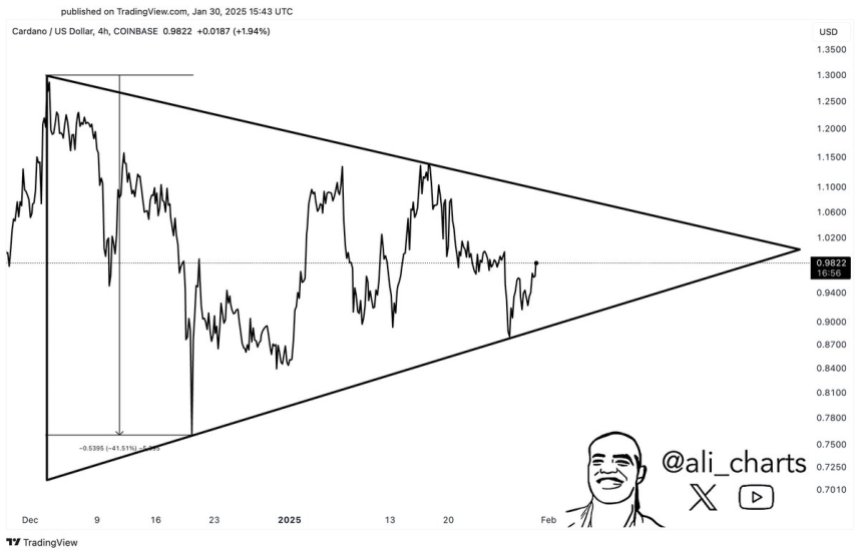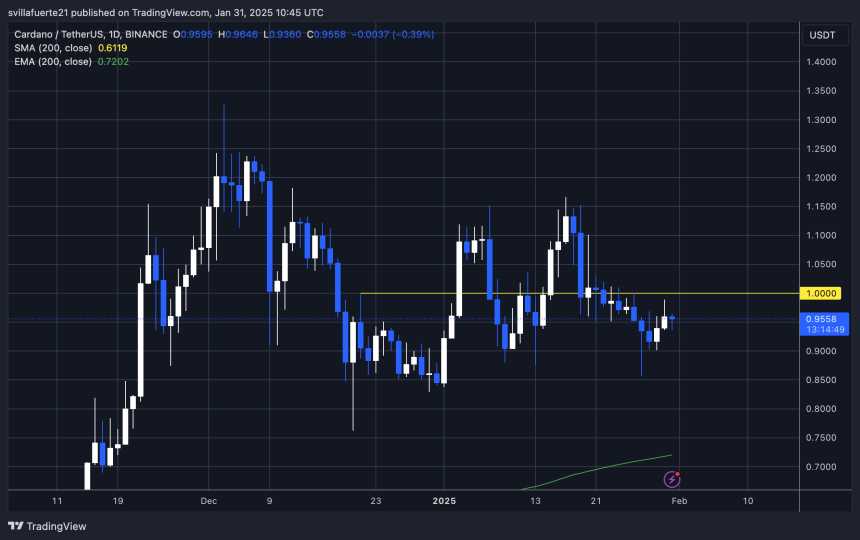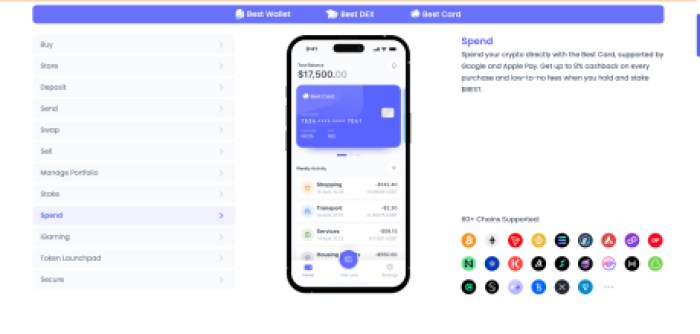Evgeny Gaevoy began his career in traditional finance, specializing in market making and prop trading. But by 2016, seeing the inefficiencies of legacy financial systems and the potential for disintermediation, Gaevoy realized there was an opportunity to create something entirely new and better.
With experience building up foreign exchange firm Optiver’s European ETF business — one of the largest in the EU — he decided to launch an algorithmic trading firm designed for the digital asset era. Since 2017, Wintermute has since grown into one of the largest algorithmic trading and liquidity providers in crypto, processing over $5 billion in daily trading volume and providing deep liquidity to 50+ trading venues across centralized and decentralized exchanges.
This series is brought to you by Consensus Hong Kong. Come and experience the most influential event in Web3 and Digital Assets, Feb.18-20. Register today and save 15% with the code CoinDesk15.
Here, Gaevoy, who will be speaking at Consensus Hong Kong, discusses how Asian crypto markets differ from those in the West, how he predicts AI will be used in trading and market making and how Wintermute is responding to the growing fragmentation of liquidity across multiple blockchains.
This interview has been condensed and lightly edited for clarity.
What led you to start Wintermute?
I started looking into the blockchain around 2016, which is relatively late compared to some early adopters. At the time, I was in traditional finance and what really interested me was disintermediation — cutting out the inefficiencies of custodians and prime brokers, which were painfully slow in how they operated. Blockchain seemed like a great way to disrupt that.
But back then, it all felt very theoretical. It wasn’t until 2017 that I really got into crypto. I quit my job, started looking around, and bought a small amount of bitcoin on Coinbase — just to test it out. Then it doubled in price in a week or two, and I barely paid attention because the volatility was just so insane compared to what I was used to in TradFi.
In TradFi market making, there are maybe 10 days a year when things get really exciting — when markets move 3-4%, and that’s considered a big deal. But in crypto, that kind of movement happens all the time. So I figured, I know prop trading, I know market making and I like building things from scratch — so why not build a market-making business in crypto? That’s how Wintermute came to be.
You’ve been actively engaged in both Western and Asian markets — what are the biggest differences you’ve observed between the two?
Regulation-wise, everything is still primarily driven by the U.S. Even in Asia, most companies watch what the U.S. is doing rather than setting their own independent course.
When it comes to OTC and institutional trading, China is the biggest missing piece. Chinese institutions and corporations are still not allowed to touch crypto, and until the Chinese Communist Party changes its stance, we won’t see proper institutional flows from there.
What key opportunities are you seeing coming out of Asia right now?
The most interesting development right now is how certain countries are opening up to crypto in meaningful ways. Japan is becoming increasingly attractive due to its improved tax policies for crypto. By reducing tax burdens on crypto holdings, the country is making it easier for both businesses and individuals to participate in the market without excessive financial penalties. This is a significant move that could drive liquidity and institutional involvement.
South Korea is another exciting case, mainly because of its massive retail market. However, a major limitation is that foreign market makers are still restricted from integrating with local exchanges. If regulators were to allow external liquidity providers to participate, it could unlock a tremendous amount of liquidity. Right now, Korean exchanges remain fairly isolated, which is why we still see phenomena like the Kimchi premium — a direct result of structural barriers preventing global liquidity from flowing freely into the market.
Hong Kong, on the other hand, plays a unique role as a pilot program for China. While China still officially bans crypto, Hong Kong is establishing regulated markets and institutional frameworks that could serve as a testing ground for how China might engage with crypto in the future. This makes Hong Kong an important region to watch, especially in terms of institutional adoption.
The key thing to watch is how these markets evolve, because they each offer different entry points into Asia’s crypto adoption cycle — Japan is attracting institutions with tax incentives, Korea is a retail-heavy market with potential liquidity unlocks, and Hong Kong is a regulatory experiment that could have broader implications for China.
What have been some of the lesser-known or unexpected catalysts driving crypto adoption and liquidity in Asia?
The biggest surprise for me is that a lot of the narratives we see on Crypto Twitter and from VCs don’t reflect what’s actually happening on the ground.
A great example is Tron and Tether. In Asia and Latin America, USDT on Tron is the most widely used crypto asset for payments, especially for the unbanked and those looking to escape currency devaluation. But in the West, nobody talks about it. There are also a lot of projects and DeFi protocols that get ignored in the Western echo chamber but are doing really well in Asia. That’s why I think it’s crucial to keep a pulse on what’s happening in Asia, rather than just relying on Western narratives.
Do you think AI will ever autonomously run an entire market-making operation?
AI is already widely used in trading, and it has been for quite some time. Machine learning is nothing new — firms have been using it in prop trading for years. What’s different now is just how much more advanced AI models are getting, and how much raw computing power is being thrown at the problem.
Take XTX for example, (another algorithmic trading firm) — they have an insane amount of GPUs dedicated to machine learning. They’re even building huge data centers in Finland just to run their AI models. It’s not something brand new in trading, but the scale at which it’s being deployed is increasing rapidly.
Will AI completely replace human traders? I don’t think so — at least not in the next 5-10 years. The biggest limiting factor is how much you can actually automate.
Right now, you have different styles of market-making firms — some heavily rely on AI, while others still have a lot of human input. Wintermute falls somewhere in the middle. We use AI where it makes sense, but there’s still a lot of human decision-making involved, especially when it comes to market dynamics that AI doesn’t fully understand yet.
The real challenge is adapting AI to a market like crypto, which is still highly unpredictable and lacks the structured data sets that traditional finance firms have access to. AI is great at pattern recognition, but it still struggles with black swan events and highly volatile markets. Until AI reaches a level where it can fully adapt to unexpected market shifts, humans will still play an important role.
How does Wintermute approach the challenge of liquidity becoming increasingly fragmented across different blockchains?
At Wintermute, our core strategy is to facilitate and promote as much diversity as possible when it comes to blockchains, centralized exchanges and decentralized exchanges. We don’t see fragmentation as a bad thing — it actually creates more opportunities for us.
Right now, we’re connected to all major centralized exchanges, a huge range of OTC counterparties and dozens of DeFi ecosystems. This diversity is our competitive advantage. Instead of waiting for the market to converge, we embrace the fragmentation and position ourselves to be everywhere liquidity exists.
Could things become more centralized over time? Maybe, but I don’t think so, at least not in the way TradFi works. In traditional finance, you have CME for derivatives, a few dominant stock exchanges and a relatively small number of key players.
Crypto is different. It’s inherently decentralized, and I think it will stay that way. There will always be new blockchains, new trading venues and new liquidity pools. Instead of everything consolidating into a few big players, I think we’ll see a continued expansion of ecosystems — and firms like Wintermute need to be agile enough to operate in all of them.
What are you most excited to discuss on stage at Consensus Hong Kong?
One of the things I would like to talk about is market structure and the role of market makers in crypto. There are so many misconceptions about what we do. For example, if you go on Crypto Twitter, you’ll see people blaming market makers for causing price crashes, which is just not how it works. There’s this huge misunderstanding about what market makers actually do, how we operate, and how we provide liquidity. I’d like to dispel some of those myths, explain how the market really functions and maybe even challenge some of the false narratives that are out there.



















